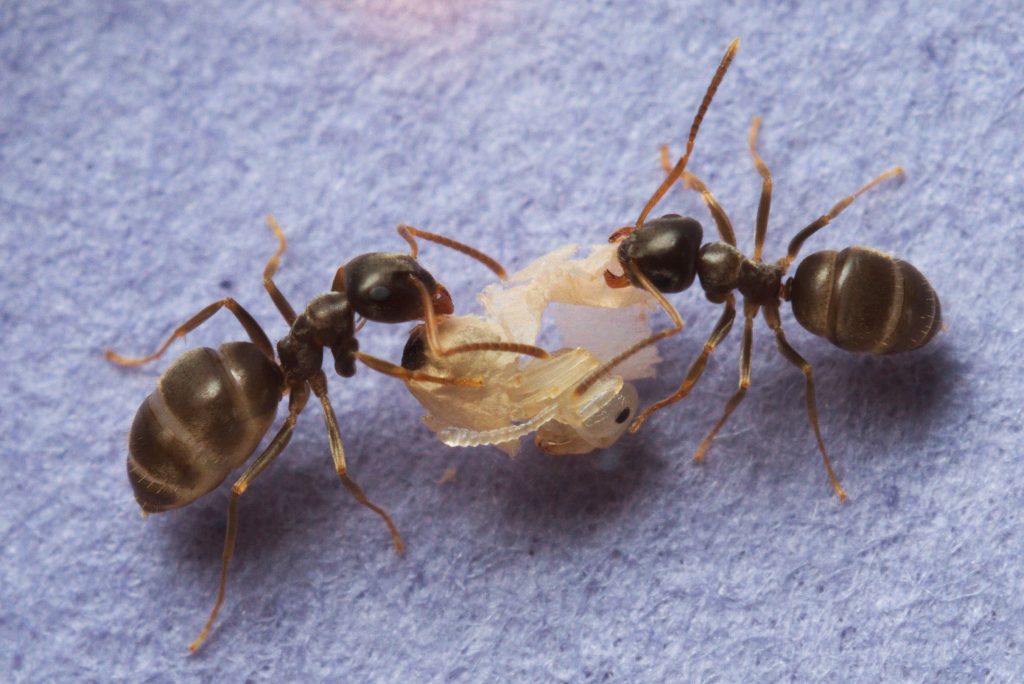January 9, 2018
Deadly disinfection in ant colonies
Invasive garden ants sacrifice infected nest mates to protect their colony – Study published in eLife.
Ants kill colony mates infected with deadly diseases when they are unable to prevent them from falling sick in the first place. In doing so, the ants protect their colony from the outbreak of an epidemic. When fighting diseases, ant colonies show a remarkable similarity with the immune system that protects the organism of vertebrate animals. This is the result of a study carried out by researchers at the Institute of Science and Technology Austria (IST Austria), first author and PhD student Christopher Pull and Professor Sylvia Cremer as the senior author, along with collaborators at Royal Holloway, University of London and the University of Würzburg. The study is published today in the journal eLife.
When an ant comes into contact with the pathogenic fungus Metarhizium, it has the potential to harm the entire ant colony. This is because infectious diseases can spread easily among colony members, who live closely together, and may lead to the death of the entire colony if infections are not contained. Sylvia Cremer and her group have previously shown that invasive garden ants (Lasius neglectus) care for colony members carrying pathogenic fungus spores by intensively grooming the contaminated individual’s body, which reduces the risk of the fungus entering the body and infecting the ant. But how do ants act when the grooming ants are not successful and an ant becomes infected with the disease? Sylvia Cremer and Christopher Pull, along with their collaborators at Royal Holloway, University of London and the University of Würzburg, investigated this question in their current study published in eLife.
Whilst ants care for pathogen exposed brood, the response to an infection is much more radical: in a series of experiments, the researchers found that the ants kill fungus-infected pupae to stop the pathogen completing its lifecycle, so that it cannot spread any further. The ants act selectively: they detect animals that are already fatally infected using chemical “sickness cues” and kill them. “We found that the ants are able to smell and single out sick colony members very early on in the infection process. They then perform what we have termed “destructive disinfection”, the killing of the sick animal and the fungus, to prevent the pathogen becoming contagious and spreading to nestmates”, explains Sylvia Cremer.
This destructive disinfection has remarkable parallels with the immune system of vertebrates. Infected cells in a body send out a signal that attracts immune cells. These then make holes in the infected cell to inject toxic substances that kill both the cell and the pathogen. Something very similar happens in Lasius neglectus, as Christopher Pull describes: “The ants produce formic acid that can kill the fungus, but it needs to enter the pupa’s body for it to work. During destructive disinfection, the ants therefore remove pupa’s silk cocoon and bite holes in its body. They then spray their formic acid through these holes, so that it enters the pupa’s body and kills the pupa along with the fungus”. Sylvia Cremer explains where this similarity may come from: “Ants in a colony work together like the cells in a body, and colonies are sometimes even referred to as ‘superorganisms’. In our study, we show the remarkable parallels between the immune responses of ant colonies and that of vertebrate bodies. The ability to detect and destroy harmful elements was likely necessary for the evolution of both multicellular organisms from single celled life and superorganisms from individual animals.”
Christopher Pull, first author of the study, was a PhD student in the group of Sylvia Cremer at IST Austria from 2012 to 2017. He is now a postdoctoral researcher at Royal Holloway, University of London. Sylvia Cremer investigates social immune defences in ants to learn more about epidemiology and disease dynamics in societies.




